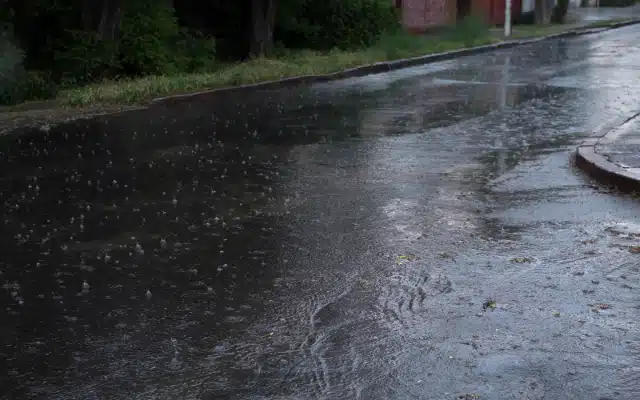Chennai: Tamil Nadu, and its neighboring areas grappled with the brunt of heavy rainfall on Thursday, leading to widespread inundation, traffic disruptions, and significant inconveniences for residents. The relentless downpour prompted authorities to take emergency measures, with Chief Minister M K Stalin at the forefront, addressing the crisis in a bid to alleviate the impact on the city and its residents.
Unprecedented Rainfall Causes Chaos
As rain pounded the city, several parts of Chennai found themselves submerged, creating chaos and impeding normal life. The inundation led to the closure of schools, exacerbating the challenges faced by citizens already navigating through the waterlogged streets. Areas like Koyambedu and Mambalam experienced stagnant water, making it difficult for morning commuters.
Emergency Review Meeting
Responding promptly to the crisis, Chief Minister M K Stalin chaired a high-level meeting with top officials at the Greater Chennai Corporation (GCC) to assess the gravity of the situation and strategize effective measures for relief. The meeting aimed to streamline coordination among various departments involved in managing the aftermath of the heavy rainfall. Stalin, well aware of the challenges posed by such weather events, emphasized the need for swift and comprehensive action.
Direct Intervention and Redressal
Stalin, keen on addressing the grievances of the affected populace, engaged directly with residents who reached out to the Command and Control Centre of the GCC seeking assistance. By personally speaking over the phone to those in distress, the Chief Minister demonstrated a hands-on approach to crisis management, ensuring that concerns were heard and appropriate actions were initiated promptly.
Night Inspections and Preparedness
Even before the high-profile meeting, the state machinery was in motion to assess the ground realities. On the night before the review meeting, Tamil Nadu Minister P.K. Sekar Babu, along with Greater Chennai Corporation Mayor R. Priya and Chennai Corporation Commissioner J. Radhakrishnan, conducted inspections in areas affected by waterlogging. This hands-on approach showcased the proactive stance of the administration in dealing with the crisis.
Disaster Response Teams on Standby
Anticipating the gravity of the situation, disaster response teams were put on standby to tackle potential emergencies arising from the heavy rainfall. The State Disaster Response Force, equipped with boats, life jackets, and other rescue equipment, was ready with 57 crews strategically positioned to respond swiftly to distress calls. This preparedness reflected the government’s commitment to ensuring the safety and well-being of the residents.
Rainfall Statistics and Impact
The heavy rainfall, not sparing any part of the city, led to recorded measurements of over 10 cm in several areas. Avadi in Tiruvallur district recorded the highest rainfall, reaching an astonishing 19 cm in the 24-hour period leading up to Thursday morning. Zone 6 Kolathur, Zone 6 TVK Nagar, and Ponneri were not far behind, each experiencing 15 cm of rainfall. The relentless nature of the downpour wreaked havoc on the city’s transportation system, affecting train services such as Mumbai Central Express, Mangalore Central Mail, Alappuzha SF Express, Nilgiris SF Express, Palakkad SF Express, and Kaveri Express. Delays ensued as rail tracks from Ambattur to Avadi Railway stations grappled with waterlogging.
Water Level Surge in Lakes
Simultaneously, the water levels in key lakes witnessed a surge due to the continuous rainfall. Chembarambakkam Lake saw an increase of 210 cubic meters, reaching a capacity of 3,645 cubic feet. The rise in water levels heightened concerns about potential overflow, necessitating vigilance and monitoring. Additionally, Puzhal Lake reached its full capacity, signaling the gravity of the situation.
Impact on Daily Life and Infrastructure
Beyond the statistics, the heavy rainfall had a tangible impact on the daily lives of Chennai residents. The closure of schools disrupted educational activities, inconveniencing students and parents alike. Commuters faced challenges navigating through waterlogged streets, leading to delays and increased travel times. The resilience of the city’s infrastructure was put to the test, with reports of flooded roads and stranded vehicles.
Continued Forecast and Ongoing Response
As the meteorological department continued to forecast more rain in the coming days, the administration remained vigilant and proactive in its response. The Chief Minister’s direct intervention and the coordinated efforts of various departments reflected a commitment to minimizing the impact of the weather-induced crisis.

















